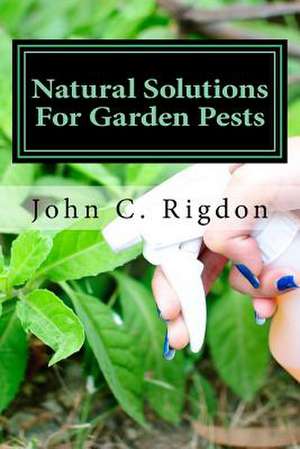Natural Solutions for Garden Pests
Autor John C. Rigdonen Limba Engleză Paperback
Preț: 77.71 lei
Nou
Puncte Express: 117
Preț estimativ în valută:
14.87€ • 15.47$ • 12.28£
14.87€ • 15.47$ • 12.28£
Carte tipărită la comandă
Livrare economică 15-29 aprilie
Preluare comenzi: 021 569.72.76
Specificații
ISBN-13: 9781514292808
ISBN-10: 1514292807
Pagini: 78
Dimensiuni: 152 x 229 x 4 mm
Greutate: 0.12 kg
Editura: CREATESPACE
ISBN-10: 1514292807
Pagini: 78
Dimensiuni: 152 x 229 x 4 mm
Greutate: 0.12 kg
Editura: CREATESPACE
